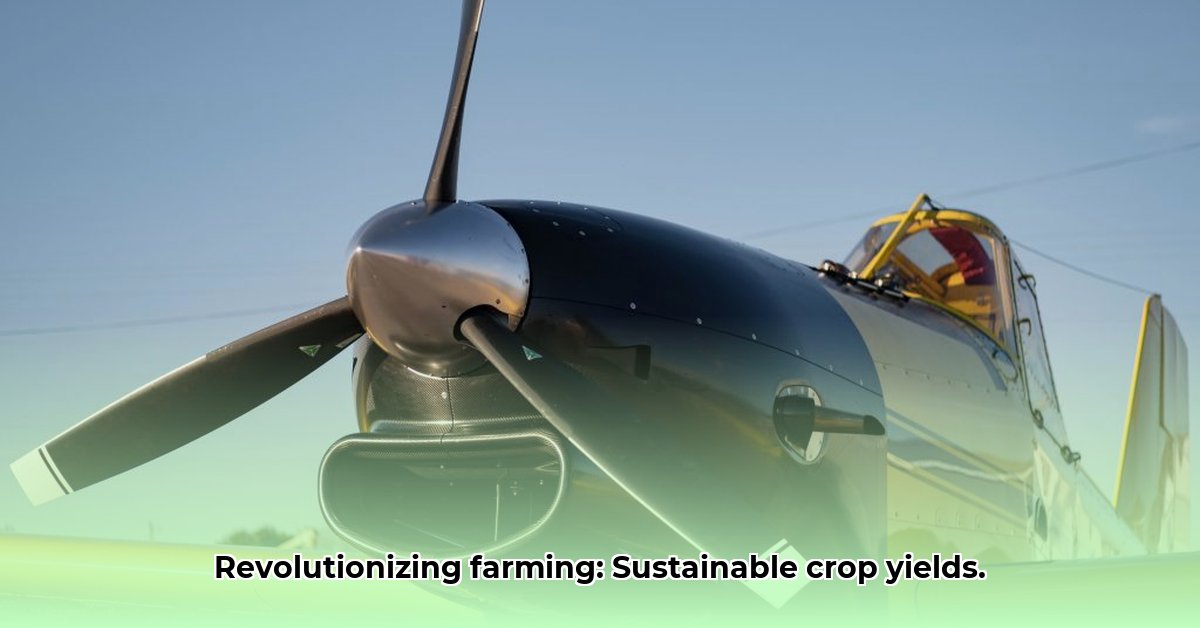
The Air Tractor AT-301, a stalwart of agricultural aviation, offers unparalleled speed and efficiency in aerial crop spraying and fertilization. However, in an era increasingly focused on sustainable practices, its environmental impact demands scrutiny. This article examines the AT-301's capabilities, its efficiency, environmental considerations, and the ongoing efforts to enhance its sustainability within the context of modern agriculture. For more detailed specifications, visit the AT-301 Specs.
The AT-301: A Deep Dive into Its Capabilities
The AT-301 is a high-wing, single-engine aircraft designed for agricultural applications. Its robust construction and large hopper capacity (holding over 1200 liters) allow for rapid coverage of extensive fields. This high productivity translates directly into time savings for farmers, enabling quicker turnaround times during crucial planting and harvesting periods. But is this speed sustainable? Let's explore the efficiency and environmental aspects to answer that question.
Productivity: Speed and Efficiency in the Fields
The substantial hopper capacity of the AT-301 allows farmers to treat hundreds of acres per day with fewer refills, significantly reducing downtime. This increased efficiency directly impacts farm productivity and overall profitability. However, this high throughput necessitates careful consideration of its environmental footprint. Are the gains in productivity worth the potential environmental costs?
The Environmental Footprint: Balancing Act Between Progress and Planet
While the AT-301 excels in productivity, its fuel consumption and chemical application accuracy need analysis within the context of sustainable agriculture. Older models, employing less fuel-efficient piston engines, contribute significantly to the carbon footprint. Isn't there a better way to achieve this efficiency without compromising environmental responsibility? High-quality research is needed to measure precise fuel consumption to determine how it scales with larger fields and different terrains.
Furthermore, while capable of both liquid and dry applications, the precision of older application systems can lead to chemical drift. This poses significant risks to water sources and surrounding ecosystems. This lack of precision highlights the urgent need for improved technology.
Precision Application: Fine-Tuning for a Healthier Future
Many older AT-301 models utilize standard spray systems lacking the pinpoint accuracy of modern GPS-guided technologies. This imprecision contributes to chemical runoff and drift, negatively impacting the environment. The adoption of GPS-guided systems offers a pathway to more targeted application, minimizing chemical waste and environmental damage. How can we incentivize faster adoption of these advanced technologies to improve application precision?
Sustainability Initiatives: A Look at the Future of Farming
The agricultural aviation industry is actively pursuing sustainability improvements. Several operators are upgrading their AT-301s with more fuel-efficient engines and GPS-guided spray systems. Dr. Emily Carter, Professor of Chemical and Biological Engineering at Princeton University, notes: "Investing in precision application technologies and fuel-efficient upgrades is not just about environmental responsibility; it's a long-term investment in farm profitability and food security." These upgrades, while demanding upfront investment, promise substantial long-term environmental and economic benefits.
Comparing AT-301 Models: A Technological Progression
Technological advancements have led to notable improvements in the AT-301 series. Newer models often feature improved engine technology, leading to better fuel efficiency and reduced emissions. However, a comprehensive comparison of different models' environmental impact relative to their productivity remains a crucial area for further research.
The Future Landscape: A Sustainable Path Forward
The Air Tractor AT-301’s future depends on its ability to incorporate more sustainable practices. The adoption of GPS-guided application technology, more fuel-efficient engines, and potentially alternative fuels are crucial steps towards a greener future for aerial agriculture. This requires collaboration between manufacturers, operators, and regulatory bodies to incentivize innovation and adoption of these technologies. Only through consistent research and development can the AT-301 truly contribute to a sustainable agricultural system.